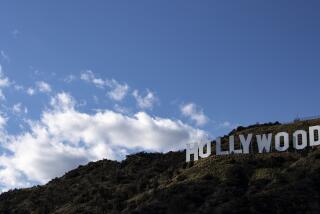China’s largest movie studio is vast, and so is its audience. But filmmakers have to toe the party line
- Share via
Reporting from DONGYANG, CHINA — The cameras were rolling, a smoke machine on high. A man in a Qing Dynasty robe struck powerful poses. Stunt doubles in puffy jackets threw slow-motion punches. Off set, rotund actors practiced front flips onto a dusty mat.
Meanwhile, the director, Si Xiaodong, was performing a stunt of his own: directing a film that Chinese audiences would watch, and that Chinese authorities wouldn’t censor.
Si’s production, “The Legend of the Tianqiao Performers,” is an eight-part series for Chinese state television about folk performers at Beijing’s Tianqiao market during the Qing Dynasty, which lasted from the 17th to early 20th centuries. That day in March, Si was shooting the fourth installment, about a large man nicknamed the “King of Silliness” who uses qigong — a traditional breathing and martial arts practice — to break bricks on his stomach.
“Because the government is fighting corruption, we’ve been told to follow guidelines,” Si said. “We shouldn’t just show that people are suffering, but show corruption, and that people are suffering because of it. That’s why the Tianqiao performers are performing.”
He paused. “But we shouldn’t focus too much on people suffering.”
In China’s Hollywood, such deliberations are part of the job.
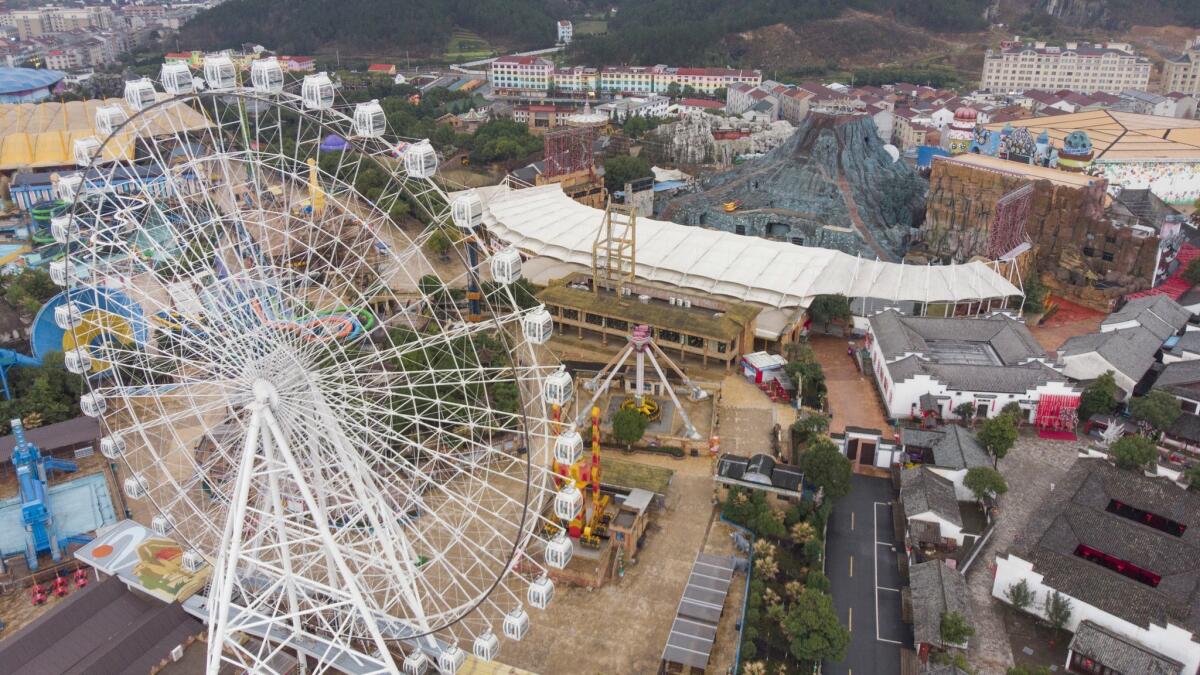
Hengdian World Studios, built on farmland in the 1990s, claims to be the largest outdoor film studio in the world, and the source of an estimated 1,200 Chinese films and TV shows. It has 13 themed shooting areas scattered throughout a nondescript town in southeastern China’s Zhejiang province. They include scores of palaces and gardens, a Republican-era city (with several villas, a hospital, a police station and a steam train), and full-scale replicas of the Forbidden City and Old Summer Palace, which was looted and burned by British forces in 1860.
Hengdian is not as central to China’s film industry as Hollywood is to the U.S. counterpart, and its dreary town center, low-budget shoots and limited nightlife don’t lend themselves to glitz and glamour. It’s also not one-of-a-kind — China also has the Shanghai Film Park (which specializes in productions set in 1930s Shanghai), Zhongshan TV and Film City in Guangdong province (home to an “England Scenic Area” and “U.S. Scenic Area”), and the Tongli Shooting Base in Jiangsu province, known for its rivers and lakes.
There’s also the real estate conglomerate Dalian Wanda’s beleaguered $7.3-billion Wanda Qingdao Studio, once billed as the “first and only filmmaking destination in China meeting international standards.” Wanda sold a stake in the studio last year.
Yet Hengdian’s enormous scope — and its focus on historical costume dramas — make it central to the Chinese government’s efforts to present a specific interpretation of the country’s history. Since taking office in 2013, President Xi Jinping has overseen a resurgence of staunch nationalism, calling it the “great rejuvenation of the Chinese nation” and the pursuit of the “Chinese dream.” He has cracked down on corruption, muzzled free speech and the media, and entrenched Communist Party control over all aspects of society.
“A lot of things have become more sensitive, especially in terms of film and media,” said Stanley Rosen, an expert on Chinese film and politics at USC who has visited Hengdian. “There’s no question about it.”
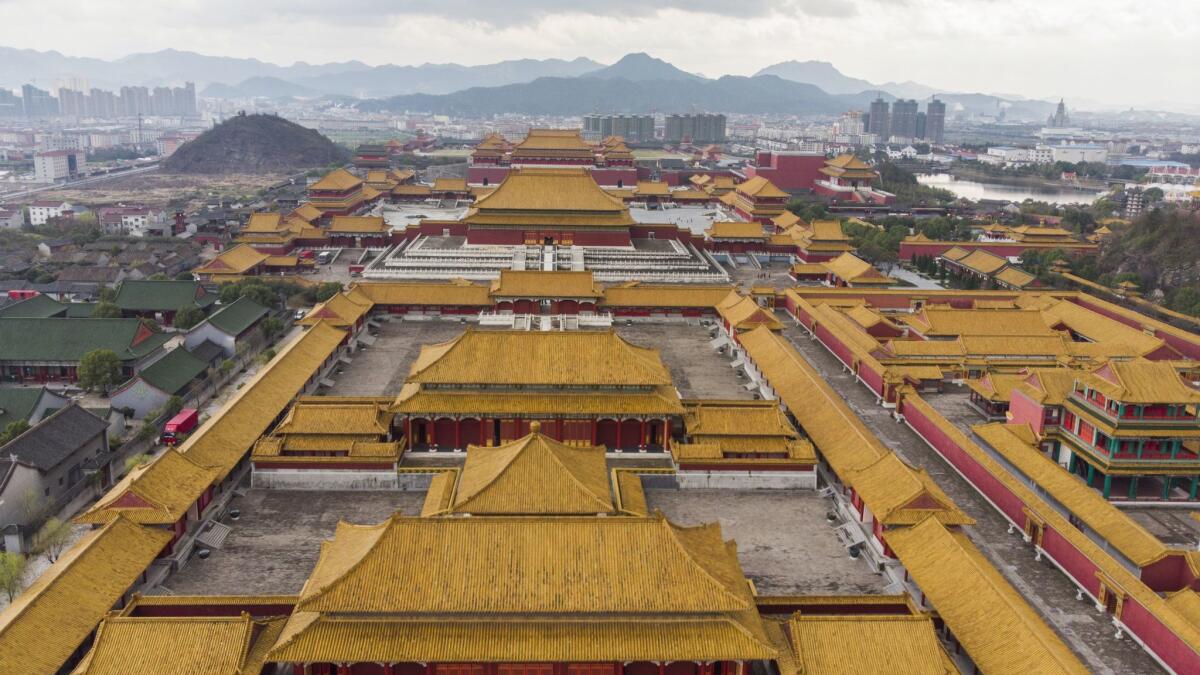
Since the early ’80s, not long after Mao Tse-tung’s death, the Communist Party has relied on sustained economic growth to bolster its legitimacy. But growth is slowing, and Xi is increasingly presenting the party as a guardian and rightful heir to China’s “5,000 years of history” — its Confucian traditions, folk arts, historical claims to territory. He’s branded any suspicion of the party’s preferred narrative as “historical nihilism.”
Some topics are entirely off-limits: Mao’s great famine of 1959-61; his calamitous Cultural Revolution of 1966-76; skepticism of Beijing’s historical claims to minority areas such as Tibet and Xinjiang.
Hengdian’s producers and directors understand that their work must reflect Xi’s political priorities. In their productions, central authority is sacrosanct; superstition shunned, or at least minimized; themes of national unity and “traditional morality” brought to the fore.
Modern settings can be a minefield. Authorities have banned shows from depicting smoking, adultery, homosexuality and reincarnation. They have warned against glorifying “foreign influence” and pulled foreign shows — even politically innocuous sitcoms such as “The Big Bang Theory” — from TV and streaming websites.
“Do not permit shows to become venues for displaying fame and wealth,” said a government dictate from 2016.
And the goalposts are constantly moving. For years, Hengdian was best known for shooting popular anti-Japanese war dramas. The shows, set during the Sino-Japanese War of 1937-1945, were largely gory, B-movie spectacles, depicting Chinese communist soldiers slaughtering scores of Japanese troops. One Chinese magazine, in 2012, reported that 700 million “Japanese soldiers” had “died” in the studio that year. (The communists, in fact, were barely involved in the war; Chiang Kai-shek’s Nationalist forces were on the front lines.)
But authorities declared the shows too sensational, and a wave of ensuing restrictions forced directors to seek other outlets. Yet the government has promised support for shows that promote “nationalist values.” And Xi frequently champions China’s historical achievements — during a speech at the National People’s Congress in March, he referenced ancient philosophers, Yuan Dynasty dramas and Ming and Qing Dynasty novels.
So now, Hengdian specializes in ancient history. Most of its productions are soap operas with gaudy costumes and maudlin dialogue. Plots revolve around revenge, thwarted romance, family conflict and imperial intrigue. “They’re going back to Tang Dynasty, a high point of Chinese civilization; the Warring States Period; and the Qing Dynasty, when China’s territorial expansion was at its greatest,” said Rosen.
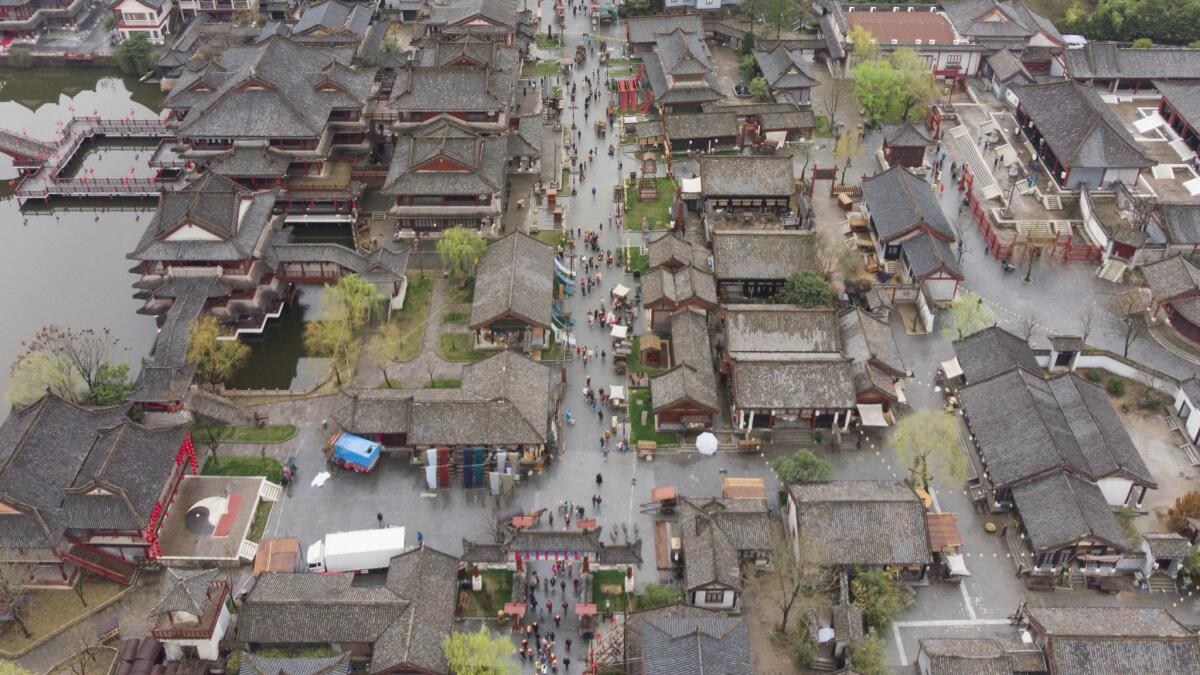
China doesn’t have anything like a studio system — these productions are financed by tech companies, real estate firms, state-run television stations and sometimes the actors.
And Chinese audiences are watching. Foreign films are dropping in popularity, as government controls make them tougher to find, and domestic productions become more sophisticated. China’s most popular TV show last year was “Advisor’s Alliance,” a drama about power struggles during the Warring States period of 475–221 BC (it was shot in Hengdian). A runner-up, the documentary series “National Treasure,” features A-list Chinese celebrities recounting the stories of ancient artifacts — a stone drum, a large vase, a landscape painting.
Sang Xiaoqing, the CEO of Hengdian World Studios, said that the studio’s budget has skyrocketed in recent years, and the firm has started construction on 40 new “high-tech studios” in Hengdian, slated for completion in 2020. “That could facilitate more Hollywood productions shooting here,” he said. (Hengdian’s productions have found little success abroad.)
He acknowledged that the studio, while privately owned, is subject to government restrictions on content. “When we’re producing more serious things, we can’t change the basic facts,” he said. “We need to research them.” Authorities have also capped the number of fantasy dramas involving supernatural elements — time travel, magic — at “about 20 per year.”
Yet Hengdian is still vibrant, a constant bustle of countless tourists and about 12,000 actors — young and old, locals and migrants, drifters and dreamers angling for a shot at fame.
About three miles from Sang’s downtown office, producer and actress Wan Er frantically darted around a football field-sized set, strewn with autumnal trees and moss-covered boulders, coordinating stunt doubles in a sword fight.
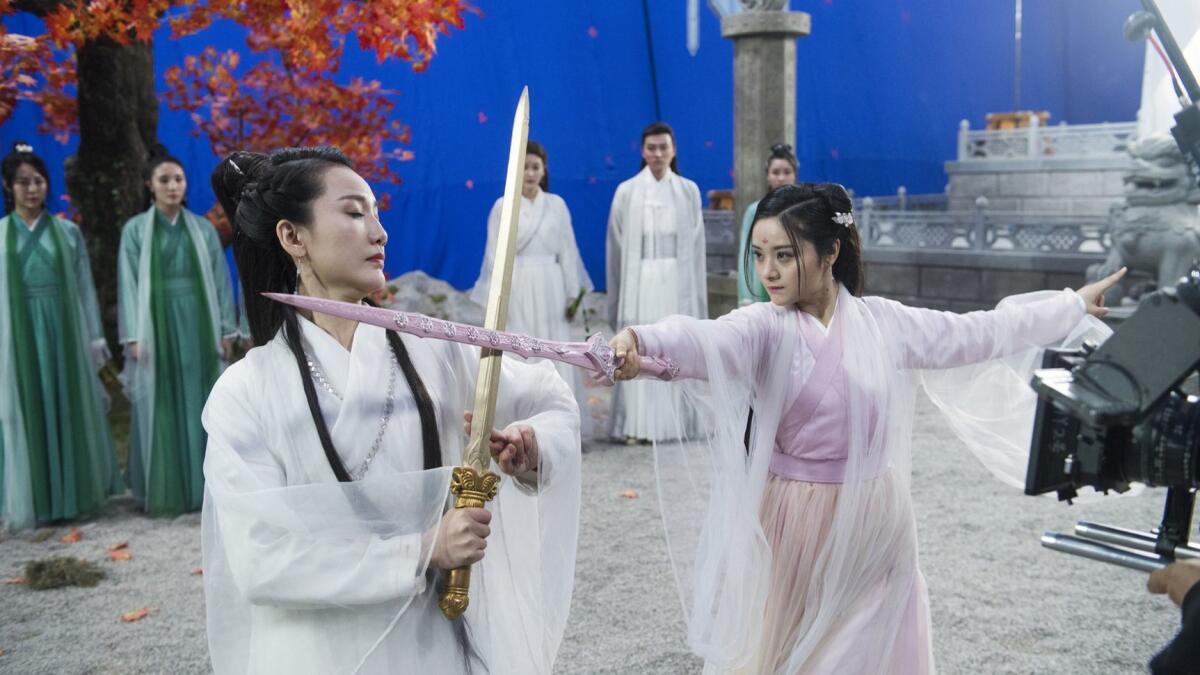
Wan’s internet drama — called “Resist Loving the Imperial Concubine 2: The Peerless Yan Shi,” and shot on a budget of $1.2 million — is about three men from northeast China who are transported back to ancient Korea, she explained. One emerges from the time travel as a woman (played by Wan). She sleeps with the emperor, and becomes pregnant. “The emperor wanted me to have an abortion, and I wanted to do it too,” Wan said. “But then there was a conflict.”
Wan’s stunt double, Xie Lirun, a young man (and former professional truck-unloader), stood in for Wan wearing a frilly pink dress and flowing black wig. He said that he used to mostly play soldiers in anti-Japanese war shows, but that work dried up in 2016. Now, he mostly does sword fights. He makes about $50 per day — good money in China. A woman, he said, would make double.
“If there’s a really good female double, the price is really high and they feel it’s not worth it,” he said. “Most female stunt doubles are too feminine and soft. Because you need strength and power for these fight scenes.”
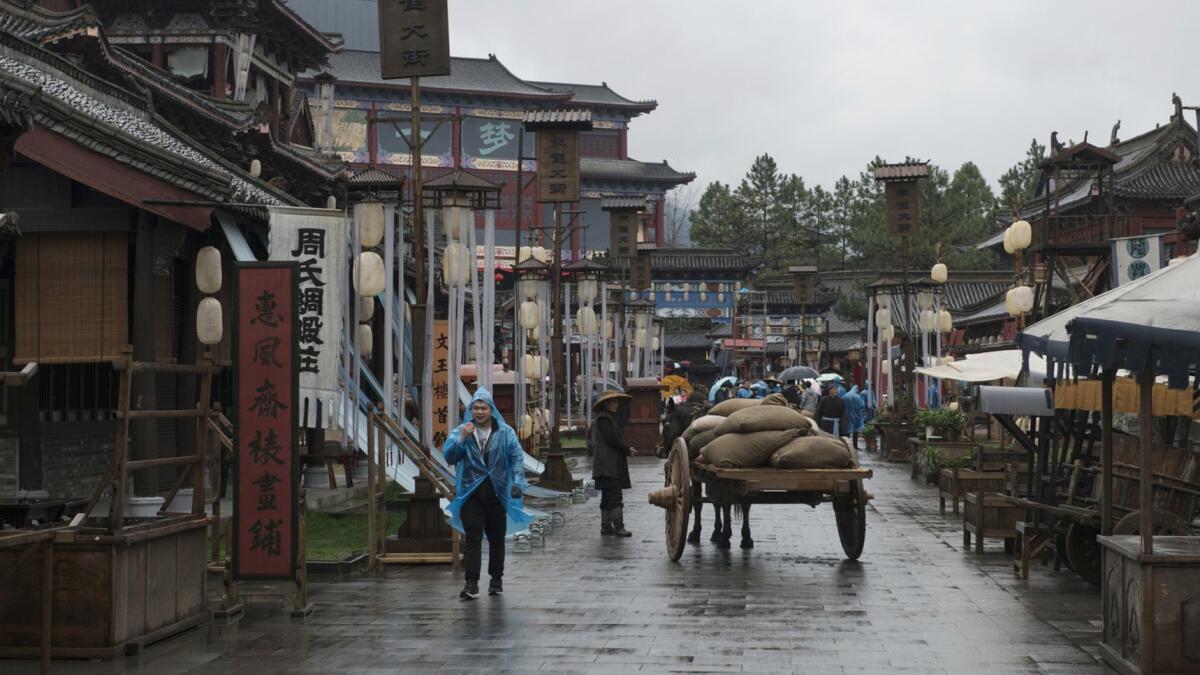
In a replica Northern Song Dynasty village a short ride away, Liu Guanlin, 29, shot “The Story of Ming Lan,” a TV drama about a young woman avenging her mother’s death (and purging the imperial court of corrupt ministers). Liu, the art director, sat in a gable-roofed watchtower overlooking a street thrumming with robe-clad extras and trundling horse carts. “We try to copy 100% from ancient paintings how ancient people lived — with accurate costumes, even pottery,” he said. “We even have a team to make Song Dynasty curtains and tablecloths.”
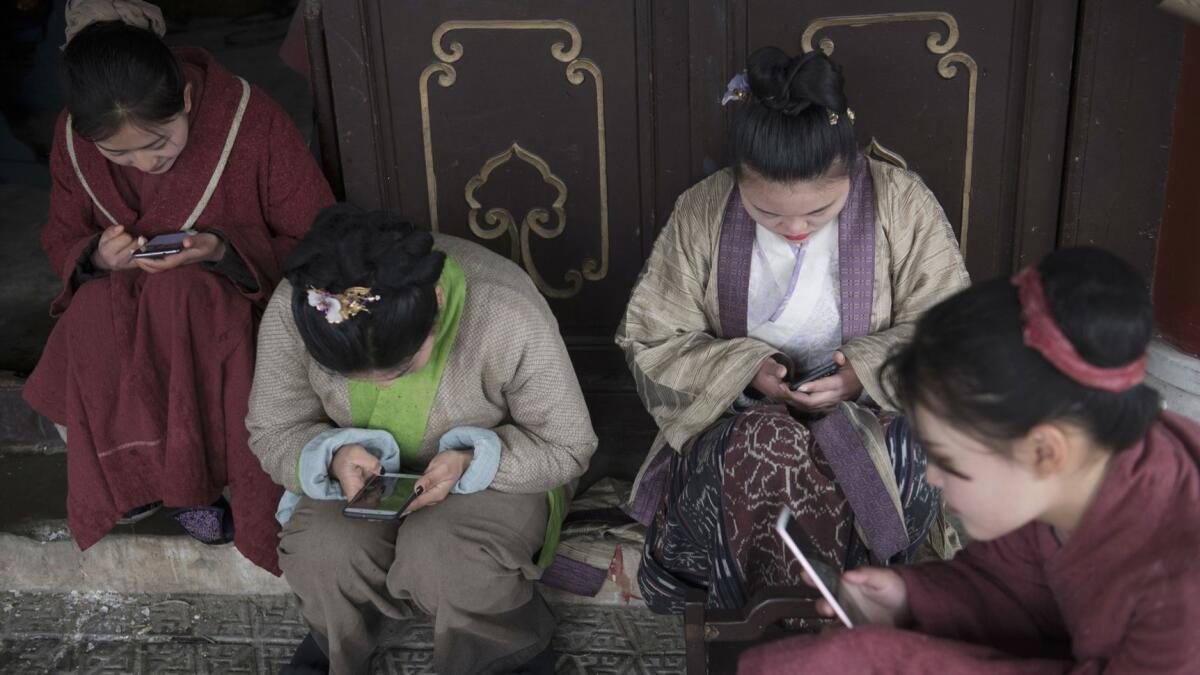
Working at Hengdian can be hard, said Li Haixiao, a 28-year-old extra on the shoot, as she waited for the cameras to roll. She’s been forced to lie down in the snow, playing dead for hours, for about $15 a day.
“But it’s really worth it, when others see me acting,” she said. “Even if it’s a really minor role for one minute. It pays off.”
For more news from Asia, follow @JRKaiman on Twitter
Gaochao Zhang in The Times’ Beijing bureau contributed to this report.
More to Read
Sign up for Essential California
The most important California stories and recommendations in your inbox every morning.
You may occasionally receive promotional content from the Los Angeles Times.


